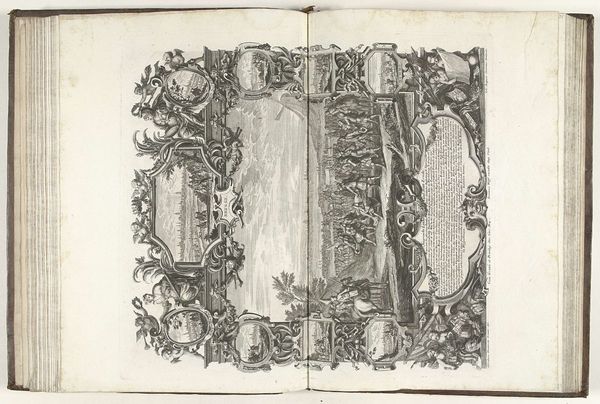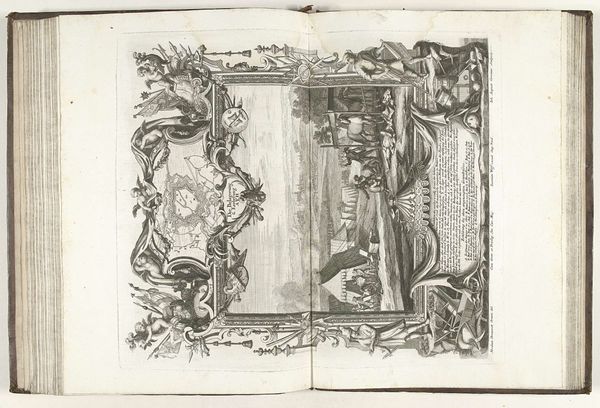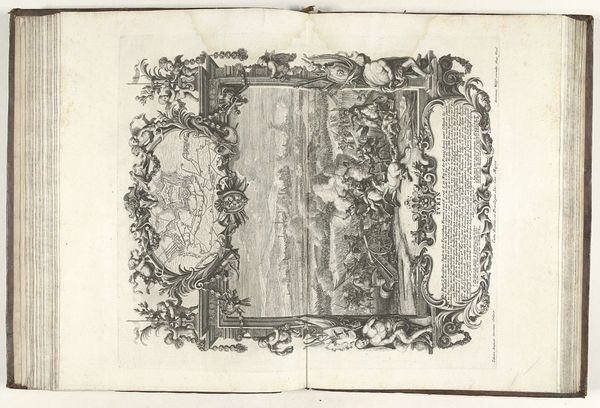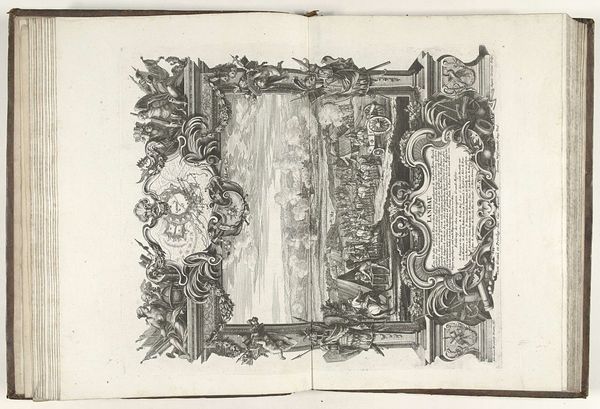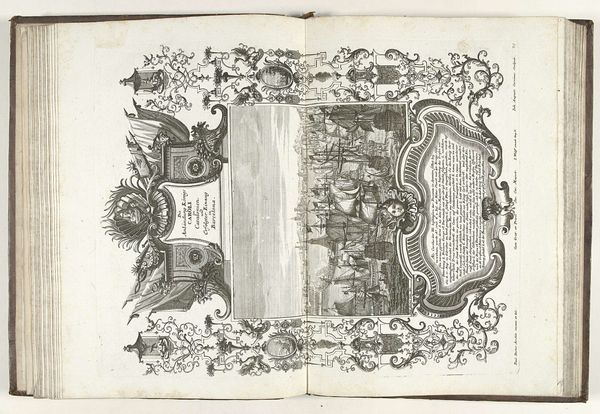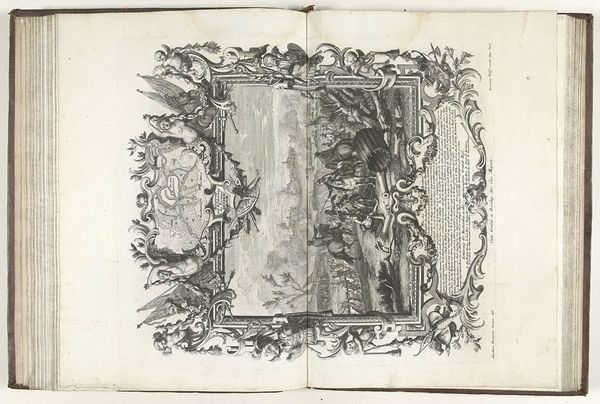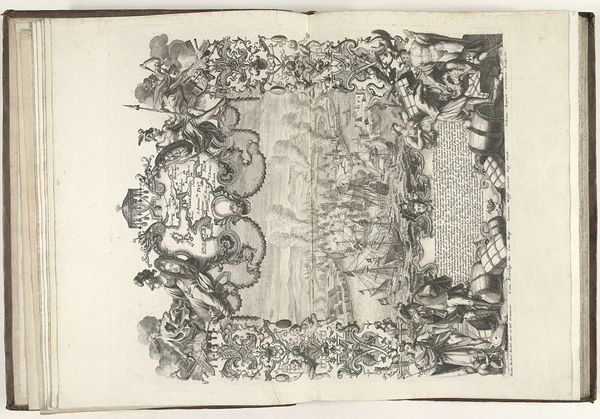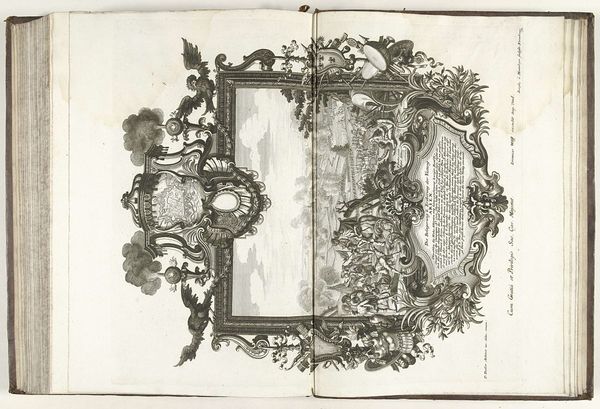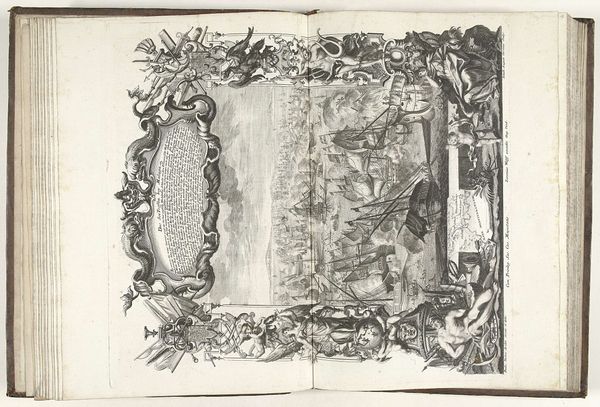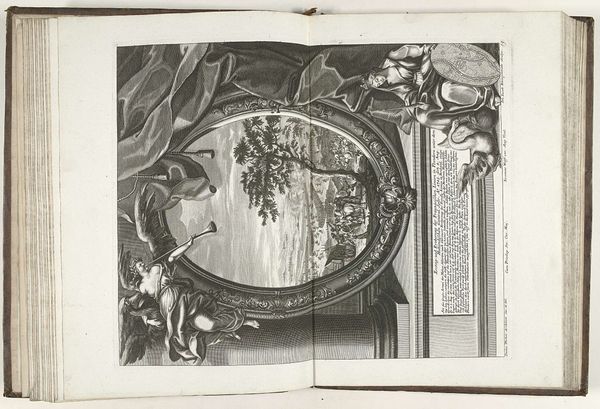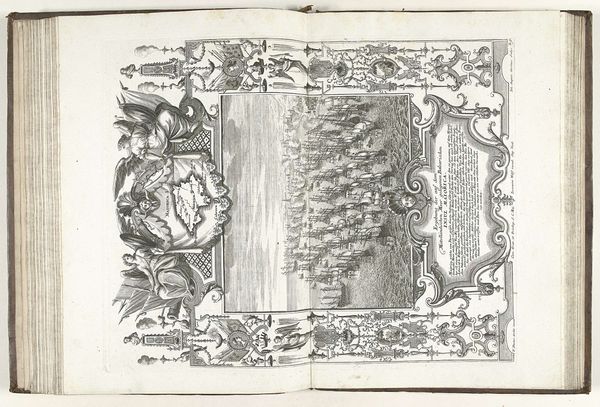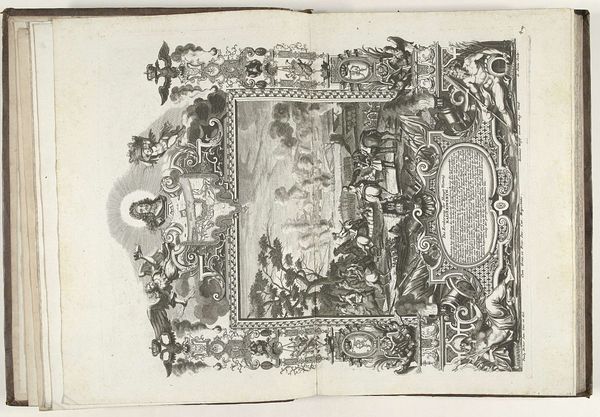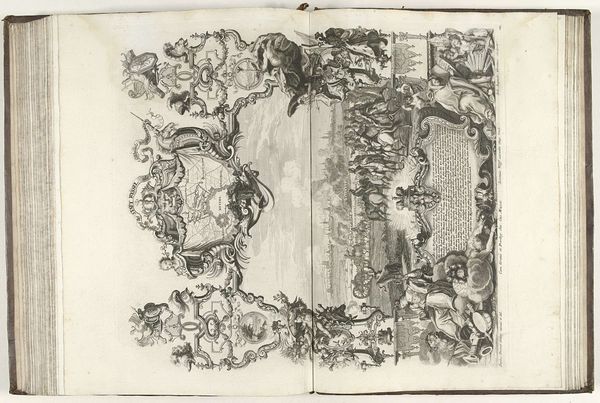
drawing, print, ink, engraving
#
drawing
#
baroque
#
pen drawing
# print
#
landscape
#
ink
#
cityscape
#
engraving
Dimensions: height 465 mm, width 395 mm
Copyright: Rijks Museum: Open Domain
Curator: Here we have Gottfried Stein's “Inname van Trarbach, 1704,” dating from 1712-1715, a Baroque pen and ink drawing transformed into an engraving. It is an excellent example of cityscapes of this era. Editor: My first impression is of meticulously organized chaos. The eye struggles to find a point of rest within the baroque ornamentation and highly detailed urban scene. Curator: Indeed. Note the balanced asymmetry. On the left, the city in retreat behind a dramatic waterfall. The right is filled with movement as the conquering forces flood the landscape, its lower right side balanced with script. Semiotically, the division emphasizes a dialectic: defeat versus victory. Editor: That division is visually powerful, reinforcing cultural memory. Water often represents cleansing and change, a visual representation of the transformative power of military conquest. The baroque flourishes, although ornamental, speak to status. Whose status is in question. Curator: Note the delicate rendering of architectural elements—the detailed facades, fortifications, and bridges that show perspective with careful precision. However, I find the script and bordering artwork distract from Stein's meticulous design. Editor: It is an organized stagecraft – a calculated drama meant to imprint on the viewer. Look how the eye is directed up the cliffside of the city in retreat as opposed to following the mass of victorious forces which also move inward toward the mountainous architecture of the defeated. It is about an experience meant to solidify into symbol and memory, but the artist does leave us questions to consider. What happened before? After? Is it really over for the town or a victory of many more battles. Curator: Ultimately, the contrasting compositional structures are fascinating: a static verticality of landscape versus a dynamic, diagonal movement of troops, captured elegantly through a complex interplay of line and shadow. The image makes it own interesting contrasts which is what I shall carry from our visit. Editor: Agreed, these images served to communicate so much, the symbols a shared experience of culture and trauma and pride that is very much still relevant for this small town along the Rhine and the place it carries in the history of war.
Comments
No comments
Be the first to comment and join the conversation on the ultimate creative platform.
